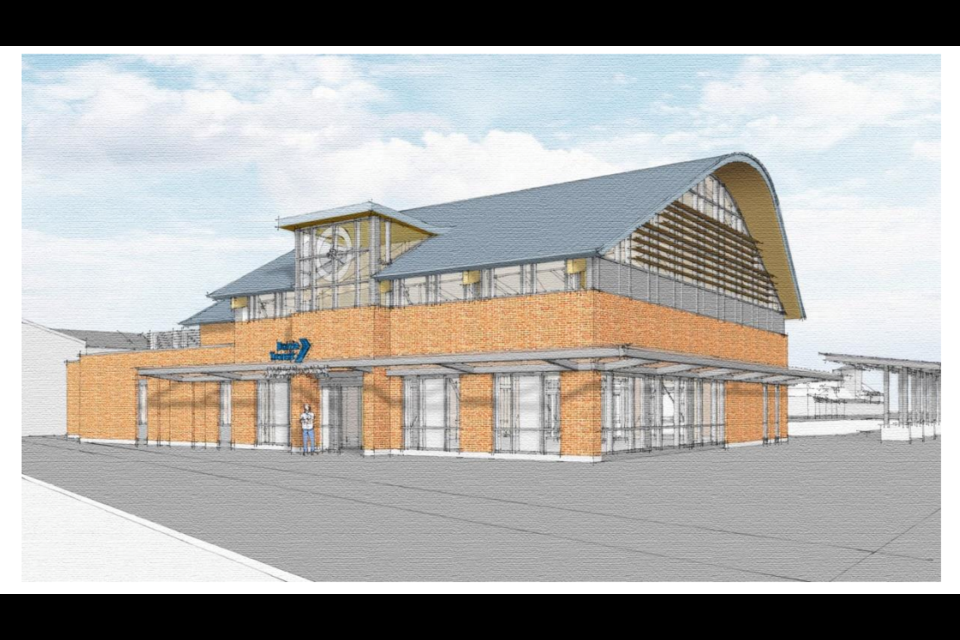Barrie’s transit mobility hub in Allandale is on track for an opening no earlier than mid-2025.
Councillors heard a recent city staff presentation on the proposed facility, which laid out the funding challenges and delays associated with the planned hub at 20 Essa Rd.
But it’s mostly about the money.
When first proposed in 2019, the project carried a $10.2-million price tag, with more than 70 per cent paid by Investing in Canada Infrastructure Program (ICIP) funding, along with a late 2022 completion date.
Now capital costs have been pegged almost three times greater, with an opening more than two years later.
“The original budget was significantly underfunded and we are looking in the range of $25 (million) to $30 million, and just because we cannot revise the existing ICIP application … we have submitted a modification and new application request to ICIP in 2022 and we are just currently waiting (for a reply),” Natalie Calder, Barrie’s project manager for capital facilities, told councillors.
Rick Pews, the city’s director of corporate facilities, said the transit mobility hub’s cost in the latest application was just more than $27.7 million.
“This budget value includes federal, provincial and municipal funds as required by the ICIP program,” he said.
Last spring, the city said construction costs had risen 40 per cent since 2018, when this project was initially identified, and there would be an additional five to 10 per cent increase annually until the project is complete.
“Also, the original schedules and delays associated with those external approvals have pushed (back) the project schedule with an anticipated completion of Q2 (second quarter) in 2025,” Calder said. “ICIP funding approval is required prior to initiating any construction on site.”
ICIP funds the building of new urban transit networks and service extensions, capital costs to construct, expand and improve public transit. Project funding breaks down to 40 per cent from the feds, 33.3 per cent from the Ontario government and 26.7 per cent from the city. Barrie was allocated $19.5 million from the province and $23.4 million from Ottawa, with a city contribution of $15.6 million, for a total of more than $58.5 million.
Staff have spoken to ICIP officials about additional funding and the city could also address the increase by using the remaining funding previously assigned to Barrie from transit-related capital, some for bus replacement.
The Allandale transit mobility hub is to provide inter-regional service, seamless transit connections between Simcoe County, Muskoka and the Greater Toronto Area and be integrated with two-way GO train services, located at the Allandale Waterfront GO Station.
The mini-hub would include bus stops and sheltered waiting areas at 24 Maple Ave., which is the current Barrie Transit Terminal. The bus stops would maintain downtown Barrie Transit service and provide direct access routes to and from the core.
Coun. Jim Harris, who represents the Allandale area, has asked what’s being done to mitigate traffic in an already busy part of Barrie when the hub is operational.
“The area is known for being very challenging to navigate the area of Essa (Road), Bradford and Tiffin (streets),” he said. “Can you give us a bit of a sense how this change will impact or hopefully impact that area of town? Because it’s already one of the more challenging intersections to navigate.”
“We did complete a transportation impact plan that highlighted some changes,” Calder said. “We are doing some modifications to the Lakeshore (Drive)-Tiffin (Street) intersection, mostly around pedestrian safety due to concerns in that area.”
Barrie’s climate emergency declaration also targets net-zero emissions by 2050 for corporate operations, and the hub could be one, which is key to reducing greenhouse gas (GHC) emissions.
Adam McMullin, manager of energy management, said that could include the transit mobility hub using solar energy.
“It’s a net-zero energy building that’s powered through electricity,” he said. “That means the building over a one-year period generates as much electricity and sends up to the grid as it takes from the grid. You get the economic benefit of not paying for that electricity because you’re sending it back to the grid.
“You get the environmental benefit because when you send renewable electricity into the grid you’re considered a net-zero emissions operations,” McMullin added. “Do we want to invest a little bit more money to ensure when this building is operational that we don’t get a utility bill.”
And 20 Essa is close enough that Metrolinx, which runs commuter trains at Allandale Waterfront GO Station, needs to sign off and approve the site plan for the mobility hub.
The site is also of architectural and historic value or interest under the Ontario Heritage Act.



